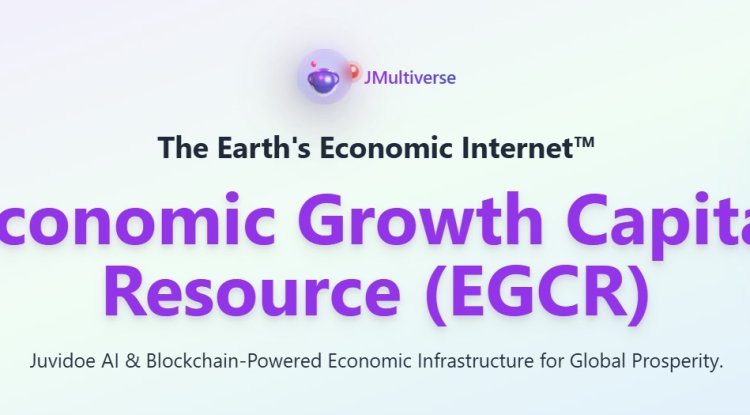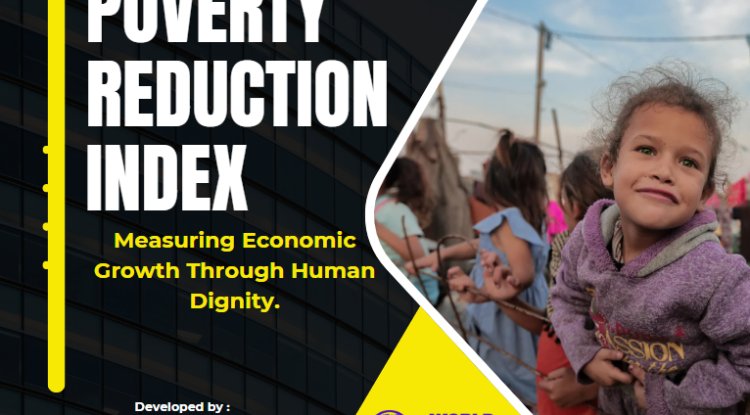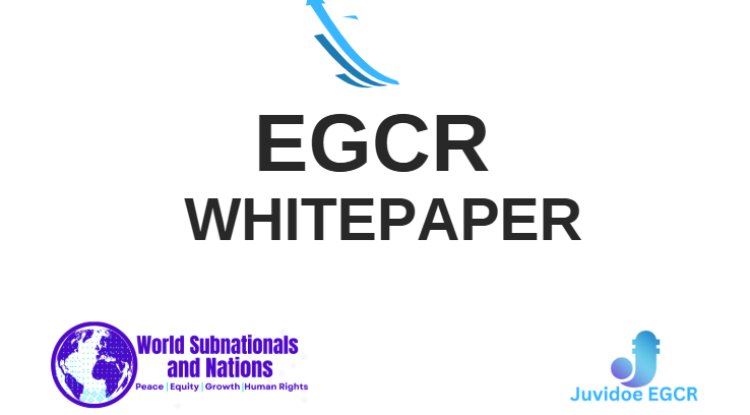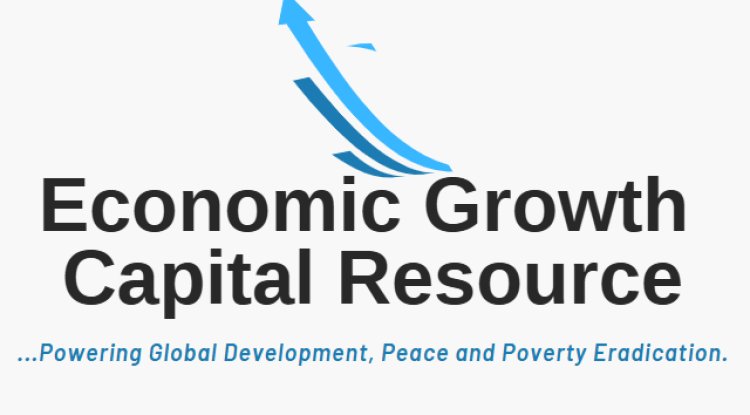THE NEED FOR BETTER ECONOMIC GLOBAL ARCHITECTURE
Economic global architecture, a term often used interchangeably with the global economic order, refers to the intricate framework that governs the complex interactions, relationships, and systems within the global economy. This comprehensive structure encompasses many components, including international trade agreements, financial institutions, regulatory frameworks, multinational corporations, and currency exchange mechanisms. Together, these elements define the rules, norms, and mechanisms that shape the behavior of nations, businesses, and individuals engaged in cross-border economic activities.

A level of interdependence and interconnectedness unparalleled in human history characterizes the modern world. The global economy has transformed into a tightly woven tapestry of interactions as goods, services, information, and capital flow seamlessly across borders. At the heart of this intricate web lies the concept of economic global architecture—an intricate framework that dictates the rules of engagement, the flow of resources, and the dynamics of economic relationships on a global scale.
This architecture is the foundational structure upon which the complex edifice of international trade, finance, and economic cooperation is built. It establishes the parameters for how nations interact economically, influencing everything from trade agreements and investment policies to financial regulations and exchange rate mechanisms. As a result, the economic global architecture plays a pivotal role in shaping the economic fortunes of nations, determining the winners and losers in the global marketplace.
However, as the world continues to evolve, the existing economic global architecture finds itself at a crossroads. The challenges and opportunities presented by technological advancements, shifting geopolitical landscapes, and pressing environmental concerns underscore the need for a more adaptive, inclusive, and equitable framework. The imperative for improvement has become evident, as the current architecture must accommodate these changes and harness their potential for the betterment of all.
This chapter delves into the intricate nuances of global economic architecture. We explore its various components and mechanisms, dissect its challenges in the modern era, and examine the compelling reasons for its transformation. We aim to illuminate the path toward a more resilient, sustainable, and prosperous global economic order through a comprehensive analysis of the forces at play. As we navigate the uncharted waters of an increasingly interdependent world, the call for a revamped economic global architecture becomes not just a necessity but a beacon guiding us toward a future of shared prosperity and collective progress.
Current Flaws in the Global Economic System
Amidst the intricate weave of human history, the global economic system emerges as an influential cornerstone, molding the trajectories of both nations and individuals. Interwoven within this intricate fabric are the strands of trade, finance, and interconnections, intricately stitching visions of prosperity and advancement across geographical boundaries. Yet, hidden within these intricacies are flaws that cast a shadow over its aspiration for fair prosperity and collective welfare. As we embark on a journey to expose these imperfections, a realm emerges where equality among nations wavers, compelling nations to grapple with the weight of discrepancies resonating across their economies and societies.
The Mirage of Equality
Deep within the intricate framework of the global economic system, an illusory mirage of equality captures the imagination – a captivating vision of harmonious growth and collective rewards. This shimmering promise, akin to an oasis on the horizon, allures an equitable world order where every nation has an equal opportunity to thrive. However, as one ventures further into this intricate tapestry, the veil of illusion gradually lifts, revealing a landscape that starkly contrasts with the illusion.
The initial allure of this mirage fades as one confronts the reality of a world characterized by profound inequities. The fervent hope for a level playing field where nations, irrespective of their status, can ascend the ladder of prosperity stands in stark contrast to the prevailing truth. Far from fostering a fair terrain, the global economic system often perpetuates and even exacerbates existing disparities. Instead of functioning as an equalizer, it sometimes becomes a magnifier, amplifying some advantages while relegating others to the periphery.
In this landscape of economic intricacies, the promise of shared benefits remains elusive for many. Rather than acting as a catalyst for universal growth, the current system inadvertently sustains the asymmetry of opportunities. Nations with historical advantages are often better positioned to harness the benefits of global trade and investment, allowing them to soar to greater heights. Meanwhile, those that have been historically marginalized find themselves trapped in the shadows, struggling to secure a foothold on the ladder of progress.
The mirage of equality in the global economic system is a stark reminder of the complexity underpinning our interconnected world. It challenges us to delve beyond surface appearances and acknowledge the underlying disparities that shape the destinies of nations. Recognizing the imperfections of this mirage, we are compelled to explore avenues that lead to genuine inclusivity and equitable growth. We can only aspire to transform this mirage into a tangible reality of shared prosperity for all nations through a concerted effort to address these inherent flaws.
Flawed Trade Dynamics
Trade, the pulsating lifeblood of the global economy, possesses a dual nature, harboring the potential for both expansion and inequality. The intricate mechanisms governing trade dynamics, conceived to facilitate the seamless flow of commodities and services, can unwittingly tip the scales in favor of those already endowed. Dominant economies wield their influence adeptly, negotiating terms that favor their interests, thus leaving smaller nations grappling with the daunting task of competing on an unbalanced battleground.
Amidst this backdrop, the ominous trio of tariffs, subsidies, and non-tariff barriers emerges as formidable gatekeepers. These barriers, ostensibly erected to regulate trade, can inadvertently become tools of exclusion, relegating developing countries to the sidelines of profitable markets. The consequence impedes their economic growth, trapping them in a cycle of reliance on more advantaged nations. The inherent flaw in these trade dynamics perpetuates a system where opportunities are skewed, and aspirations are stifled. It is imperative to recalibrate the balance for a more equitable global trade landscape.
The Debt Dilemma
Within the fold of the global economic system's embrace, not all nations are met with warmth; for many, it brings the burden of suffocating debt. As developing countries strive to carve their niche on the global stage, they often become entangled in a complex web of loans extended by affluent nations and international financial bodies. Initially offered to propel growth, these loans can swiftly transform into a vice-like grip, diverting essential resources away from critical social services and vital infrastructure endeavors.
This web of indebtedness casts a shadow on a nation's potential, ensnaring it in a cycle that perpetuates economic inertia. The ceaseless cycle of repaying debt stifles the room for maneuverability, hindering the capacity to invest in areas that drive genuine progress. The debt dilemma not only undermines a country's prospects for self-reliance but also threatens its ability to ascend beyond the confines of its circumstances. Addressing this dilemma is imperative to unshackling nations from the clutches of debt and unlocking their potential for sustained and inclusive development.
Financial Volatility and Fragility
Amidst the towering edifices of global financial hubs, a tempest of volatility frequently simmers, its reverberations extend well past national boundaries. The intricate interlinkages between financial markets, despite enabling swift streams of capital, concurrently lay bare nations to the perilous specter of contagion. A crisis brewing in a distant corner of the globe holds the potential to cascade like a chain reaction, casting economies into tumult across continents. This tumultuous instability poses the greatest threat to developing nations, as their constrained resources and fragile financial frameworks render them defenseless against external shocks.
In this intricate dance of global finance, even minor ripples can evolve into surging waves of disruption. The phenomenon underscores the imperative of building resilience within financial systems, ensuring that even the most vulnerable nations possess the mechanisms to weather the storm. As the world becomes increasingly interconnected, addressing the intricacies of financial volatility becomes an integral facet of nurturing equitable global prosperity.
Technological Disruption and Inequality
The digital age, with its promises of innovation and progress, also casts a shadow of inequality. Technological advancements, while transforming industries and economies, can exacerbate existing disparities. The digital divide, characterized by unequal access to technology and information, creates a chasm between nations that can harness the benefits of the digital revolution and those left on the fringes. Automation threatens jobs in developing economies, further deepening inequalities and posing challenges to sustainable development.
Environmental Exploitation and Disparities
As the global economic system powers forward, it often does so at the expense of the environment, perpetuating a cycle of ecological degradation that disproportionately impacts vulnerable nations. Extractive industries, unchecked pollution, and resource depletion can devastate ecosystems and communities, hitting developing countries the hardest. These nations bear the brunt of environmental crises, which can lead to displacement, loss of livelihoods, and social unrest, further entrenching inequalities.
A Call for Equitable Change
A rallying cry for change resonates amid the flaws that mar the current global economic system. The imperative for equitable global prosperity has never been stronger. Recognizing the interconnectedness of nations and humanity's shared destiny, there is a growing momentum to address these flaws and forge a path toward a more just and inclusive economic order.
Balancing Trade and Development
A cornerstone of equitable change lies in reimagining trade dynamics. A recalibration of trade agreements to prioritize sustainable development and the needs of developing nations is essential. The global economic system can foster a more level playing field by reducing trade barriers, addressing subsidies that distort markets, and providing technical assistance. Fair and transparent trade practices can empower nations to harness their comparative advantages and participate more meaningfully in the global economy.
Debt Relief and Sustainable Financing
Addressing the debt dilemma requires a comprehensive approach that balances financial stability with sustainable development. Initiatives for debt relief and adopting responsible lending practices offer developing nations the opportunity to allocate resources to vital sectors like education, healthcare, and infrastructure. By embracing inventive financing mechanisms like impact investing and green bonds, resources can be directed toward endeavors that foster economic growth and environmental sustainability.
Strengthening Financial Resilience
Enhancing financial stability is pivotal to mitigating the impact of financial volatility on developing nations. The global economic system can foster resilience by promoting responsible lending and borrowing practices, bolstering financial regulation, and ensuring financial institutions are accountable for their actions. Mechanisms for crisis prevention and management can provide a safety net, shielding nations from the destructive aftermath of economic shocks.
Harnessing Technology for Inclusion
When harnessed thoughtfully, technology can bridge gaps and create pathways to inclusion. Initiatives to expand digital infrastructure, improve access to education and training, and promote technological innovation in developing nations can pave the way for more equitable participation in the digital economy. Collective endeavors between developed and developing nations play a pivotal role in guaranteeing that the advantages of technology extend to even the most remote corners of the world.
Sustainable Development and Environmental Justice
A commitment to environmental sustainability is central to achieving equitable global prosperity. The global economic system can drive change by incentivizing sustainable practices, promoting clean technologies, and supporting nations in transitioning to green economies. International cooperation on environmental agreements, climate adaptation, and resource management can ensure that the burdens and benefits of environmental stewardship are shared equitably.
Empowering Local Initiatives
Ultimately, the pursuit of equitable global prosperity rests on empowering local initiatives and nurturing homegrown solutions. Grassroots efforts, community-driven development projects, and social entrepreneurship can empower individuals and communities to shape their destinies. The global economic system can be supportive by providing resources, expertise, and collaboration platforms that amplify these local endeavors' impact.
The imperfections within the present global economic system are indisputable, yet so is the capacity for transformation. The vision of a fair global prosperity edges closer to realization as nations, communities, and individuals unite to tackle these imperfections. The global economic system can evolve into a force that propels all nations towards shared well-being by recalibrating trade dynamics, fostering sustainable financing, strengthening financial resilience, harnessing technology, prioritizing environmental justice, and empowering local initiatives. The quest for equitable global prosperity is a journey fraught with challenges but also a journey that holds the promise of a brighter and more inclusive future for all.
Pursuing Economic Architecture that Fosters Equality and Inclusion
Imagine a world where the concept of "us" and "them" dissolves into a symphony of collaboration, where the aspirations of a small village in one corner of the globe resonate with the ambitions of a bustling metropolis in another. This vision drives the pursuit of economic architecture that fosters equality and inclusion – a vision where every nation is afforded a seat at the table of progress, regardless of its historical narrative or geographical coordinates.
At the heart of this transformation lies visionary leadership, leaders who rise above the tide of short-term gains to navigate the uncharted waters of long-term, sustainable growth. The shackles of conventional wisdom do not bind these leaders; they are the trailblazers who envision an economic landscape that thrives on the principles of fairness and shared destiny. Their decisions, guided by a moral compass, breathe life into policies that prioritize investments in education, social welfare, and infrastructure, recognizing that the dividends of such investments far outweigh the allure of fleeting gains.
Yet, the journey towards a more inclusive economic architecture requires more than just visionary leadership; it necessitates a paradigm shift in the mechanisms underpinning global trade and investment. It beckons leaders to dismantle the walls of trade barriers that have long stifled the potential of developing nations. Envision a situation where tariffs, previously used as obstacles, transform into bridges of potential, permitting the seamless exchange of goods and services across borders and unveiling fresh pathways for expansion. Such an approach doesn't just level the playing field; it transforms it into fertile ground for innovation, entrepreneurship, and shared prosperity.
In this new economic narrative, investment is not a privilege reserved for the affluent but a lifeline extended to all nations, irrespective of their economic prowess. World leaders collaborate to design investment frameworks that empower emerging economies, nurturing a diverse ecosystem of startups, businesses, and industries. This approach breathes life into regions that were once marginalized, spurring job creation, technological advancement, and a sense of ownership in the global economic tapestry.
Still, the path toward an inclusive economic architecture encounters obstacles, with financing emerging as a pivotal concern. In this context, innovation emerges as the guiding star, directing leaders toward sustainable resolutions. Picture a world where international funds, buoyed by a collective commitment, flow toward eradicating poverty, combating climate change, and advancing education. These funds stand as a testament to the shared determination of nations, evolving into tools of transformation that cultivate a fairer distribution of resources and opportunities.
Education stands as a cornerstone of empowerment, a key that unlocks the doors to economic inclusion. Leaders collaborate to establish global education initiatives that transcend geographical boundaries, bringing knowledge to every corner of the world. Imagine a scenario where digital literacy programs, vocational training, and quality education are accessible to even the most remote communities. This commitment to education doesn't just empower individuals; it catalyzes an economic renaissance, nurturing a skilled workforce that fuels innovation and drives economic growth.
But economic inclusion goes beyond education; it extends to safeguarding the vulnerable and eradicating poverty. Here, world leaders envision comprehensive social safety nets that cradle those in need, ensuring access to healthcare, basic income support, and affordable housing. In this compassionate economic order, no one is left behind; everyone is equipped with the tools to contribute meaningfully to their society and nation's progress.
However, the quest for equality and inclusion still needs a profound dedication to environmental sustainability. World leaders come together to formulate policies that interweave economic growth with conscientious resource management, adopting renewable energy, and reducing carbon emissions. This comprehensive strategy goes beyond national concerns, acknowledging that the planet's well-being is intricately entwined with the essence of global prosperity.
Technology has become an equalizer in this new economic paradigm, bridging the gaps between nations. Leaders facilitate the transfer of technology from developed to developing nations, ensuring that innovative solutions are accessible to all. Collaborative research initiatives flourish, propelling nations towards economic diversification, entrepreneurship, and a thriving digital economy. The digital divide narrows, and the promise of technology becomes a reality for even the most remote communities.
Crucially, the pursuit of economic architecture that fosters equality and inclusion hinges on the power of collective action. World leaders forge partnerships that transcend geopolitical boundaries, uniting towards a common goal. These partnerships become conduits for knowledge sharing, resource pooling, and joint problem-solving. Imagine nations collaborating to tackle challenges that transcend borders – poverty, healthcare, education, and beyond. In this united front, the seeds of equality and inclusion take root and flourish.
As this transformative journey unfolds, leaders redefine success, moving beyond the narrow confines of GDP growth. They champion alternative metrics that measure well-being, social progress, and environmental stewardship. In this new measurement of prosperity, the value of human lives and the planet's health take center stage, guiding policies prioritizing holistic development over fleeting economic gains.
Pursuing economic architecture that fosters equality and inclusion is not a mere ideal; it is a roadmap toward a world where shared prosperity is not a distant dream but a lived reality. It is a journey that requires the collective resolve of visionary leaders, innovative policies, and global collaboration. As world leaders embrace this transformative mission, they have the power to reshape the economic landscape, knitting together a tapestry of nations where equality, inclusion, and shared well-being are not just aspirations but the very essence of a brighter future for all.




















